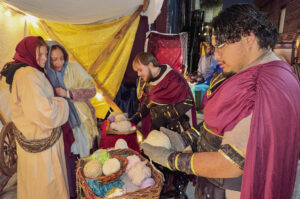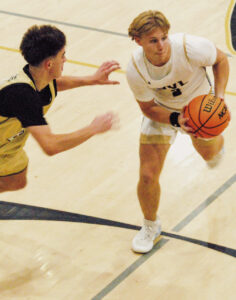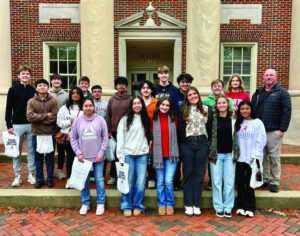Education flies high with paper airplane project
Teacher Carol Fretwell explains to her students the effects of drag following their plastic bag relay race.
For decades – or longer? – schoolchildren have been warned against making and throwing paper airplanes instead of focusing on their studies. For Russellville Elementary School fifth-graders last week, however, making paper airplanes was exactly the classwork Carol Fretwell had in mind.
Students participated in a carefully-designed STEAM project – Science, Technology, Engineering, Art, Math – to discover for themselves principles of aerodynamics.
Fretwell gave each student a piece of paper with which they could make an airplane of their own design. Other materials they could use included … nothing. Research, however, was a crucial part of the Engineering Design Process student conformed to in creating their planes: Ask, Imagine, Plan, Create and Improve.
“I did some research on it when I got home, and the Internet said if you made it smaller, the air would pick it up,” explained Brock Reathford.
Daniela Pascual first tested her design with a piece of newspaper, after also doing research.
After a night of planning and creating, students brought their paper airplane creations to school to test their flight distance, after which it was time for the Improvement phase. Some students found they needed to make their planes smaller. Some found the plane needed wing modifications. During the improvement phase, they were permitted to use any materials they chose.
One crucial factor was drag – air resistance – which was the focus of a cross-curricular lesson Friday.
Students experienced a lesson that combined science and physical education with a plastic bag relay race in the gymnasium. Students endeavored to fill plastic grocery sacks with air as they dashed back and forth across the gym and made the connection how the air resistance slowed their speed – and could also slow the speed of their airplanes.







